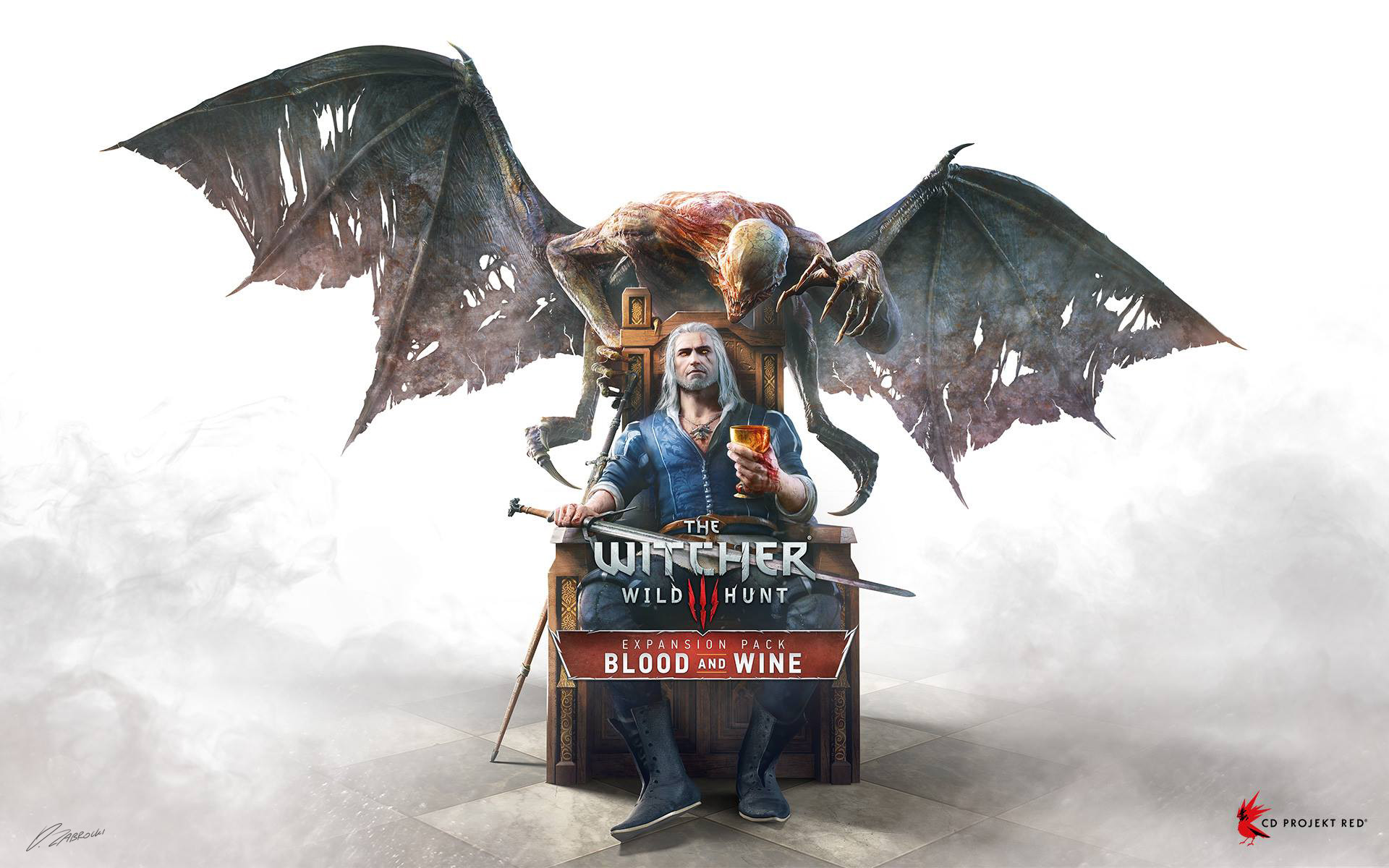Sam Saunders takes a look at the last, great swansong of Projekt Red’s longstanding Witcher, Geralt of Rivia.
When I sat down to play the latest (and sadly, last) expansion for my favourite game of 2015, The Witcher 3: Wild Hunt, I was feeling a little apprehensive. After the amazing base game, the excellent character-driven story of Hearts of Stone (the first expansion, released last October), and over 140 hours of exploration, combat and treasure hunting, I was worried that maybe this expansion wouldn’t have anything new to offer. I needn’t have as I’m happy to report that this isn’t in any way the case, with Blood and Wine fitting in perfectly with the rest of The Witcher 3, whilst providing a beautiful region and an interesting story.

In this expansion, the player finds themselves once more thrust into the shoes of Geralt of Rivia, a professional monster slayer, or witcher. You are given the option to play the expansion separate from a main game save, allowing you to tackle Blood and Wine with an appropriately levelled and equipped Geralt, or to start the new expansion from any of the noticeboards scattered around Velen and Novigrad. However, Blood and Wine eclipses both the previous expansion and the base game as the most challenging The Witcher 3 has ever been, therefore a level 35 character is recommended by the developers. Like Hearts of Stone the expansion starts simply enough, with Geralt accepting a call for help issued by two knights hailing from a distant region, who are defending a local village from bandits. It is here that the similarities conclude, as the knights whisk Geralt away from war-torn Velen to the comparatively peaceful Toussaint, a region blatantly modelled upon the South of France. The new map is roughly the size of Velen and comes complete with vineyards, chivalrous knights and eye-catching scenery. It feels straight out of a storybook, and whilst I thought this would become tiresome rather quickly, Geralt soon discovers that there’s conflict bubbling under the charming fa├ºade. Over the course of a roughly 20-hour runtime, you’ll experience a main questline featuring an investigation into the murders of three knights-errant by the Beast of Beauclair and the return of a long lost friend, whom those familiar with The Witcher novels by Andrezj Sapkowski will be pleased to see.

Whilst the main story itself was gripping, there’s a plethora of new side quests, undiscovered locations to explore and new creatures to fight; such as the plant-like Archespores, giant centipedes and Shaelmaar. Side-quests of particular note include Geralt participating in a tourney, and another featuring a peculiar spoon collecting monster. Geralt himself also receives a vineyard from the Duchess of Toussaint (Anna Henrietta, one of the expansion’s standout new characters) at the start of his journey, which can be upgraded to display suits of armour and weapons, as well as provide a stable for Roach. The only bitter disappointment with this feature was that the player has to simply wait for the renovation to be finished. Consequently, there’s no special construction cutscene. Another downside is the catastrophically long loading times, which despite improvement in post-release updates continue to drag on. Finally, there are five new sets of grandmaster Witcher gear to be found around Toussaint and a side quest leads to the addition of a powerful new skill or ÔÇÿmutation’ for Geralt, as well as finally unlocking more ability slots.

All in all, this is another excellent example of CD Projekt Red at their best. The developer has produced a masterclass in exactly what post-release content should be, delivering new mechanics, quests, interesting locales and fearsome creatures in bucketloads. Best of all, it serves as the perfect send off for both Geralt and The Witcher gaming saga.
Pros:
- Beautiful and Diverse Open World
- An excellent fairy-tale story in which Geralt hunts The Beast of Beauclair
- New Mutations System
Cons:
- Lengthy load times
Final Score: 9/10
Text – SAM SAUNDERS
Photography – ELIS DOYLE



